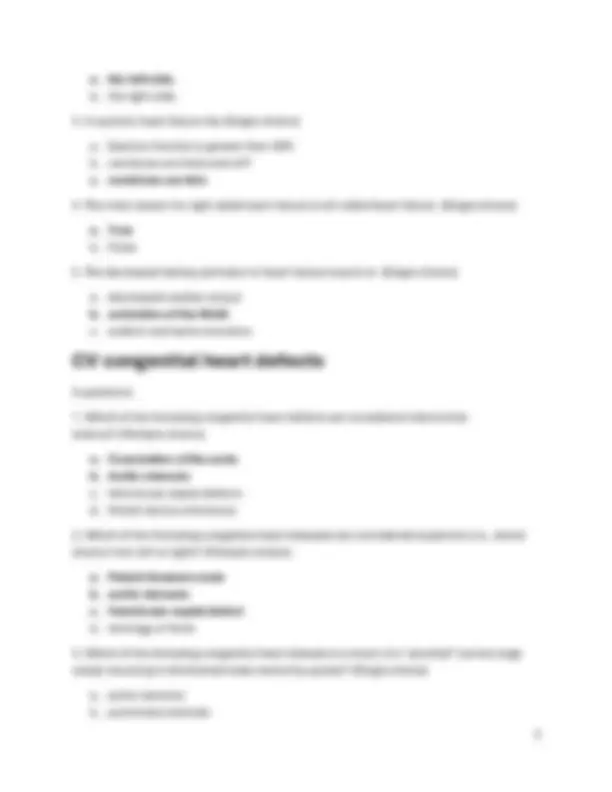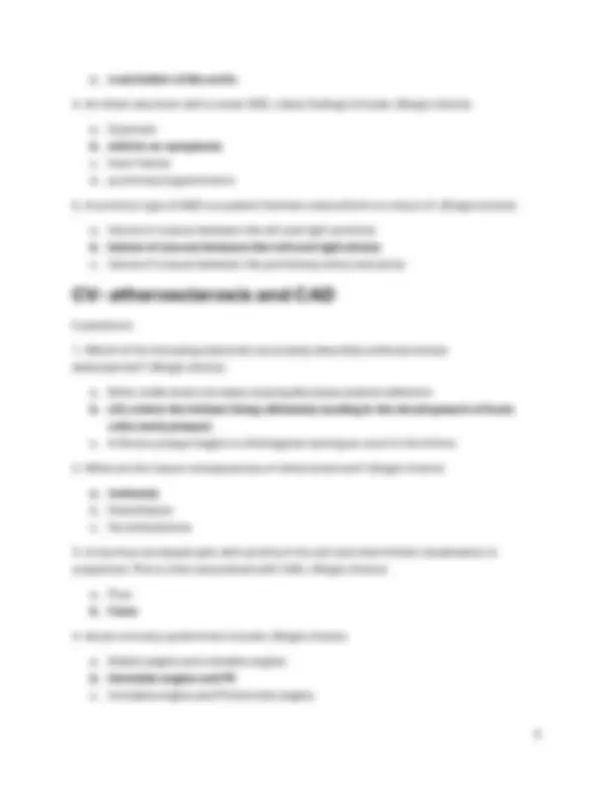





Study with the several resources on Docsity

Earn points by helping other students or get them with a premium plan


Prepare for your exams
Study with the several resources on Docsity

Earn points to download
Earn points by helping other students or get them with a premium plan
Community
Ask the community for help and clear up your study doubts
Discover the best universities in your country according to Docsity users
Free resources
Download our free guides on studying techniques, anxiety management strategies, and thesis advice from Docsity tutors
A series of multiple-choice questions and answers covering various aspects of the cardiovascular system. It includes topics such as valvular disorders, cardiomyopathy, atrial fibrillation, heart failure, congenital heart defects, atherosclerosis and coronary artery disease, arteries and veins, and hypertension. The questions are designed to test understanding of key concepts and terminology related to cardiovascular health.
Typology: Quizzes
1 / 6

This page cannot be seen from the preview
Don't miss anything!




3 questions
a. Dilated b. Hypertrophic c. Restrictive
3 questions
3 questions
c. coarctation of the aorta
5 questions
6 questions